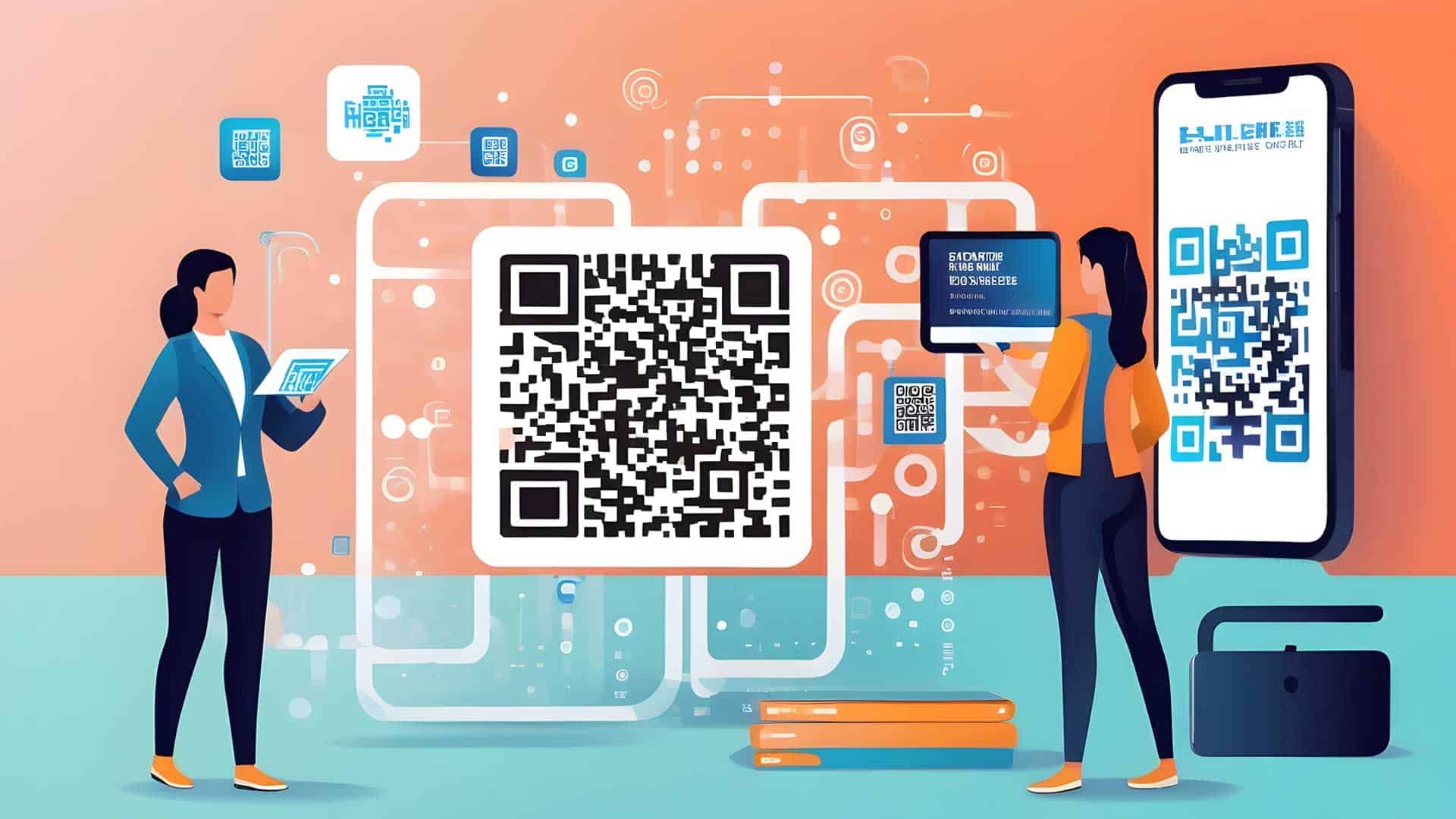QR codes (or Quick Response Codes) have played a pivotal role, acting as a bridge between the physical and digital worlds. They’re everywhere—changing how we get information, make payments, and engage with products.
However, as technology continues to advance, it’s crucial to explore QR code alternatives. This blog post delves into the limitations of QR codes, introduces innovative alternatives, and guides businesses on choosing and creating alternatives tailored to their needs.
What is a QR Code?
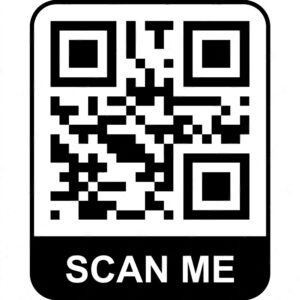
A QR code, or Quick Response code, is a two-dimensional matrix barcode that stores information in a pattern of black squares on a white background.
It was first developed in 1994 by a Japanese company named Denso Wave, a subsidiary of Toyota, to track automotive parts during manufacturing.
The QR code gained popularity due to its ability to store more data than traditional barcodes and its quick readability.
It became widely known for its convenience in various applications, allowing users to easily access information by scanning the code with a smartphone camera.
Today, QR codes have become an integral part of our daily lives, used in diverse fields such as marketing, logistics, healthcare, and contactless payments, illustrating the enduring impact of this innovative technology.
Limitations of QR Codes
Despite their widespread use, QR codes have notable limitations:
1. Dependency on Smartphone Technology
QR codes rely on smartphones for scanning, limiting accessibility. Users without smartphones or those with malfunctioning cameras are unable to interact with QR codes, excluding a portion of the population from accessing the information encoded.
2. Limited Data Capacity
QR codes have a finite capacity for storing data. While suitable for basic information like URLs or contact details, they may not accommodate extensive data, limiting their utility in applications that require more comprehensive information storage.
3. Lack of Aesthetic Appeal
QR codes are often monochromatic and lack visual appeal. This limits their integration into visually driven marketing materials or products where aesthetics play a crucial role. The unattractive appearance may also impact user engagement.
4. Security Concerns
QR codes can be vulnerable to security breaches. Malicious actors can manipulate QR codes to redirect users to fraudulent websites or distribute malware. Users need to exercise caution when scanning codes from untrusted sources.
5. Print Quality and Distance
QR codes may lose functionality if printed on low-quality materials or if the print is damaged. Additionally, the scanning distance is limited, requiring users to position their smartphones close to the code, which may be inconvenient in certain scenarios.
6. Limited Readability Angles
QR codes must be scanned at specific angles for accurate recognition. This constraint can lead to user frustration, especially in situations where the code is not easily accessible or visible.
7. Dependency on Internet Connectivity
Retrieving information from a QR code often requires an internet connection. In locations with poor or no connectivity, users may face obstacles in accessing the intended content, affecting the reliability of QR codes.
8. Lack of Standardization
There is no universal standard for QR codes. Different industries and applications may use varied formats, leading to compatibility issues. Standardization could enhance interoperability and streamline QR code usage.
9. Limited Use in Dynamic Environments
QR codes may struggle in dynamic settings where the information they encode changes frequently. In scenarios requiring real-time updates, QR codes might not be the most efficient solution.
10. Resistance to Adoption
Despite their prevalence, some users resist adopting QR codes due to privacy concerns, unfamiliarity, or a perceived inconvenience in scanning. Overcoming this resistance is crucial for the widespread acceptance and use of QR codes.
Exploring Dynamic QR Code Alternatives
Embracing the need for alternatives, several options offer unique features and address QR code limitations:
Near Field Communication (NFC)

Near Field Communication (NFC) is a wireless technology that allows for contactless communication between devices, facilitating seamless interactions with just a simple tap.
Advantages:
- Quick and effortless data exchange.
- Secure transactions without physical contact.
- Compatibility with a wide range of devices.
Features:
- Short-range communication (typically a few centimeters).
- Operates in the 13.56 MHz frequency.
- Supports a variety of applications, including mobile payments and access control.
Example:
Mobile payment systems like Apple Pay and Google Pay utilize NFC technology, enabling users to make secure transactions by tapping their smartphones on compatible terminals.
Augmented Reality (AR) Codes

Augmented Reality (AR) codes integrate digital content with the physical world, providing an immersive and interactive experience when scanned.
Advantages:
- Enhanced user experience with interactive overlays.
- Ideal for marketing, education, and product packaging.
- Bridging the gap between physical and digital environments.
Features:
- Combines real-world visuals with digital content.
- Triggers animations, videos, or additional information.
- Versatile applications in gaming, marketing, and education.
Example:
AR-enabled product packaging that, when scanned, reveals product details, animations, or exclusive promotions, creating a memorable and engaging user experience.
RFID (Radio-Frequency Identification)
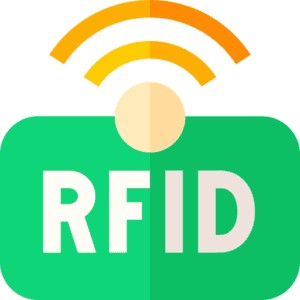
Radio-Frequency Identification (RFID) uses radio waves to identify and track objects, offering efficient and automated data collection.
Advantages:
- High-speed data transfer without direct line-of-sight.
- Widely used in logistics, inventory management, and supply chain.
- Long-range identification capabilities.
Features:
- Tags with unique identification codes.
- Reading devices (RFID readers) for data collection.
- Applications in retail, healthcare, and industrial sectors.
Examples:
In retail, RFID tags on products enable streamlined inventory management, reducing manual efforts and enhancing accuracy in tracking merchandise throughout the supply chain.
Microsoft Tags
Microsoft Tags are customizable 2D codes designed for marketing and branding, offering a visually appealing alternative to traditional QR codes.
Advantages:
- Colorful and customizable with logos and brand elements.
- Increased visual appeal for marketing materials.
- Easy integration with the Microsoft Tag app for scanning.
Features:
- Customizable shapes and designs.
- Incorporation of brand colors and logos.
- Suitable for promotional materials and advertisements.
Example:
Microsoft Tags can be used in marketing campaigns, allowing users to scan the code with the Microsoft Tag app to access promotional content, websites, or special offers.
SnapCodes

SnapCodes, popularized by Snapchat, are visual codes used within the app to facilitate seamless interactions, adding friends, or unlocking special features.
Advantages:
- Unique way of engaging users within the platform.
- Simplifies friend additions and feature unlocking.
- Supports creative marketing campaigns.
Features:
- Visual codes with unique patterns and designs.
- Integration within the Snapchat app for scanning.
- Versatile applications in social media marketing.
Examples:
In Snapchat, users can scan SnapCodes to quickly add friends or unlock special filters and lenses, demonstrating how visual codes can enhance user engagement within a specific platform.
Data Matrix Codes
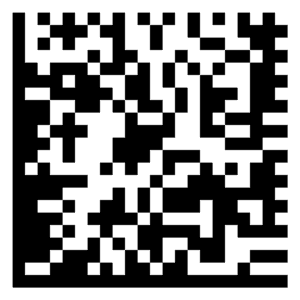
Data Matrix codes are compact 2D codes designed for efficient information storage, commonly used in manufacturing and logistics.
Advantages:
- High data capacity in a small space.
- Suitable for small-sized product labeling.
- Resilient to damage, ensuring readability.
Features:
- Square or rectangular patterns of black and white cells.
- Varied data encoding capacities.
- Applications in product tracking and identification.
Example:
In manufacturing, Data Matrix codes are used on small product components for efficient tracking and identification, providing detailed information in a limited space.
Short URLs and Custom Shortcodes

Short URLs and custom shortcodes offer concise alternatives for easy sharing of links, providing simplicity and user-friendly access.
Advantages:
- Simplified sharing of web links.
- Ideal for marketing materials with limited space.
- Easy to remember and type.
Features:
- Shortened URLs or custom alphanumeric codes.
- Redirection to longer URLs or specific content.
- Integration in printed materials, advertisements, or social media.
Examples:
Brands often use shortened URLs or custom shortcodes in marketing campaigns or social media posts, allowing for easy sharing and tracking engagement with the provided content.
BeeTagg Codes
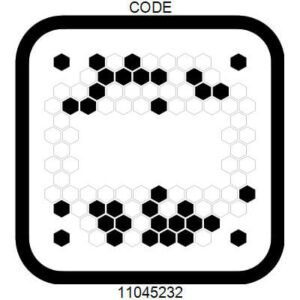
BeeTagg Codes combine QR codes with augmented reality elements, providing an interactive and dynamic user experience when scanned.
Advantages:
- Enhanced functionality through augmented reality.
- Versatile applications in marketing and education.
- Engaging user experiences with multimedia content.
Features:
- QR code structure with additional AR capabilities.
- Integration with the BeeTagg app for augmented reality features.
- Suitable for interactive marketing campaigns.
Examples:
BeeTagg Codes can be employed in marketing materials or educational resources, offering users an interactive experience by triggering augmented reality content.
Customized Visual Codes
Customized Visual Codes offer personalized and brand-aligned alternatives to traditional QR codes, enhancing visual appeal and brand recognition.
Advantages:
- Aesthetic customization with brand logos and colors.
- Increased engagement through visually appealing codes.
- Versatility in marketing and branding efforts.
Features:
- Integration of brand elements into the code design.
- Varied shapes, colors, and patterns.
- Applications in advertisements, product packaging, or promotions.
Examples:
Brands can use customized visual codes in marketing materials or product packaging, providing a visually appealing and brand-aligned way for users to access additional content or promotions.
How to Choose an Alternative to QR Code?
As we explore alternatives to the ubiquitous QR codes, a thoughtful selection process becomes paramount. Navigating the diverse options requires a strategic approach to ensure alignment with specific application needs, optimal data capacity, device compatibility, and adherence to industry standards.
1. Analyze Specific Application Requirements:
Before choosing an alternative to QR codes, it’s crucial to analyze the specific requirements of your application.
Consider the intended use case, the nature of the information you want to convey, and the desired user experience.
For example, if your application involves interactive marketing campaigns, you might lean towards visual and engaging alternatives like Augmented Reality (AR) codes.
Understanding your application’s unique needs will help you narrow down the options that align with your goals.
2. Evaluate the Volume of Data You Need to Store:
Different alternatives have varying data capacities, and your choice should align with the volume of data you need to store.
If your application involves a substantial amount of information, such as detailed product specifications or extensive records, alternatives like Data Matrix Codes or RFID might be more suitable due to their higher data capacity.
Evaluate the content and complexity of the data to ensure the chosen alternative can accommodate your requirements.
3. Consider Compatible Scanning Devices
Compatibility with scanning devices is a critical factor in choosing a QR code alternative. Assess the devices your target audience is likely to use for scanning.
For instance, if your audience predominantly uses smartphones, alternatives like Near Field Communication (NFC) or Short URLs might be more practical.
Compatibility ensures a seamless user experience and accessibility, contributing to the overall success of your application.
4. Evaluate the Volume of Data You Need to Store:
Consider the industry standards and support for the chosen alternative. Some industries may have specific requirements or regulations that influence the selection of a particular technology.
Additionally, assessing the level of support and adoption in your industry is vital. Opting for alternatives that have gained industry acceptance ensures a smoother integration process and a higher likelihood of widespread user acceptance.
How to Create QR Code Alternative?
Define Purpose and Goals:
Clearly articulate the purpose and goals of your QR code alternative. Whether it’s for interactive marketing or seamless transactions, a precise definition guides the development process. Example: If the goal is interactive marketing, explore options like Augmented Reality (AR) codes for engaging campaigns.
Explore and Assess Technologies:
Research and evaluate alternative technologies like NFC, AR codes, or RFID based on your defined goals. Example: Explore Near Field Communication (NFC) for secure, contactless transactions in a retail environment.
Prototype, Test, and Document:
Create prototypes to visualize functionality. Rigorously test on various devices and scenarios, documenting successes and areas for improvement. Example: Prototype an AR code for product labels, testing user engagement and practicality in a retail setting.
Implement and Plan for Scalability:
Integrate the chosen alternative, adhering to industry standards. Plan for scalability to accommodate growth. Example: Implement RFID for inventory management, ensuring the system can handle an expanding product range.
Final Words
In the ever-evolving landscape of digital interaction, the limitations of QR codes drive the exploration of innovative alternatives.
Businesses should assess their specific needs and consider factors like data capacity, aesthetics, and compatibility when choosing alternatives.
The journey from defining goals to implementation requires careful planning, but the rewards in user engagement and functionality can be substantial.
As we break away from the conventional QR code paradigm, a world of possibilities unfolds, offering tailored solutions for diverse applications.
Relevant Guides
How to add links to snapchat stories
Do URL Shorteners Impact the speed
Are there any risks of using URL shorteners
Are there any analytics available for shortened links
How to make qr codes for google forms
Can I edit or update a shortened url
